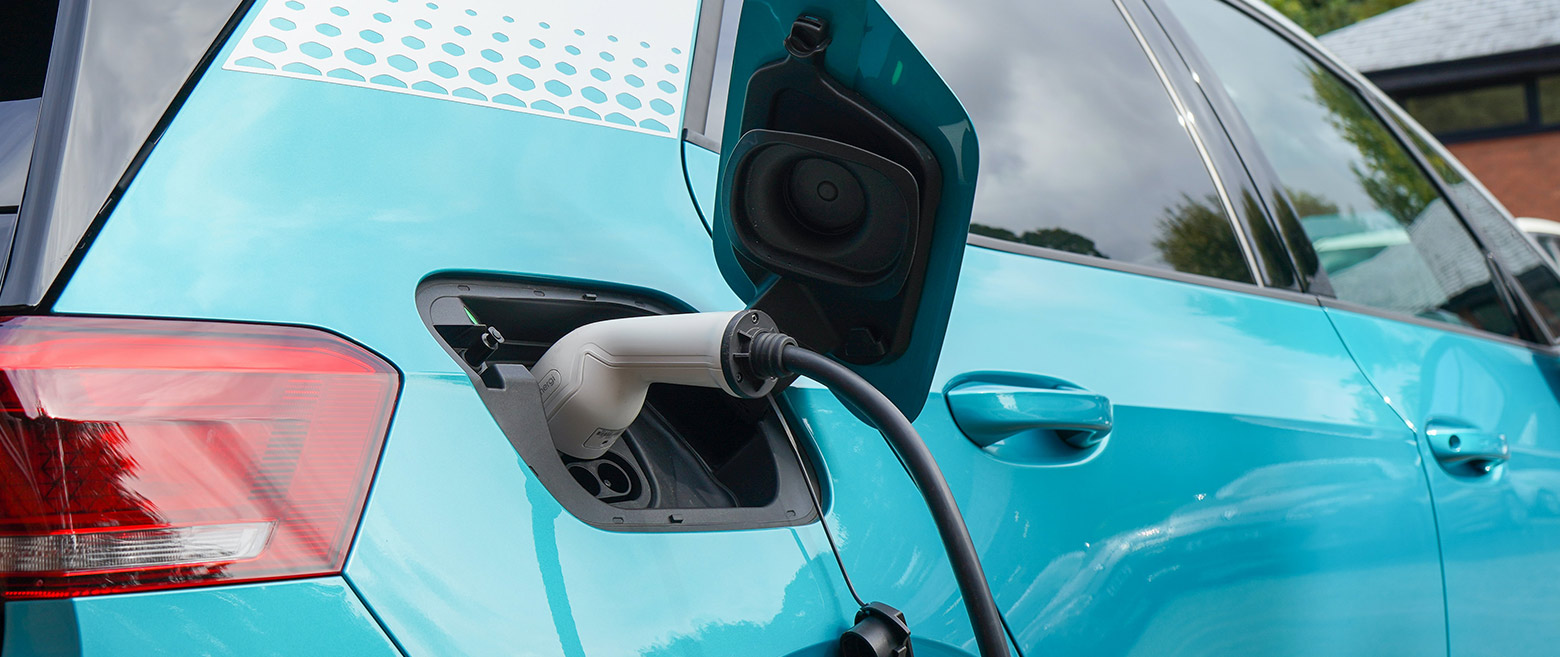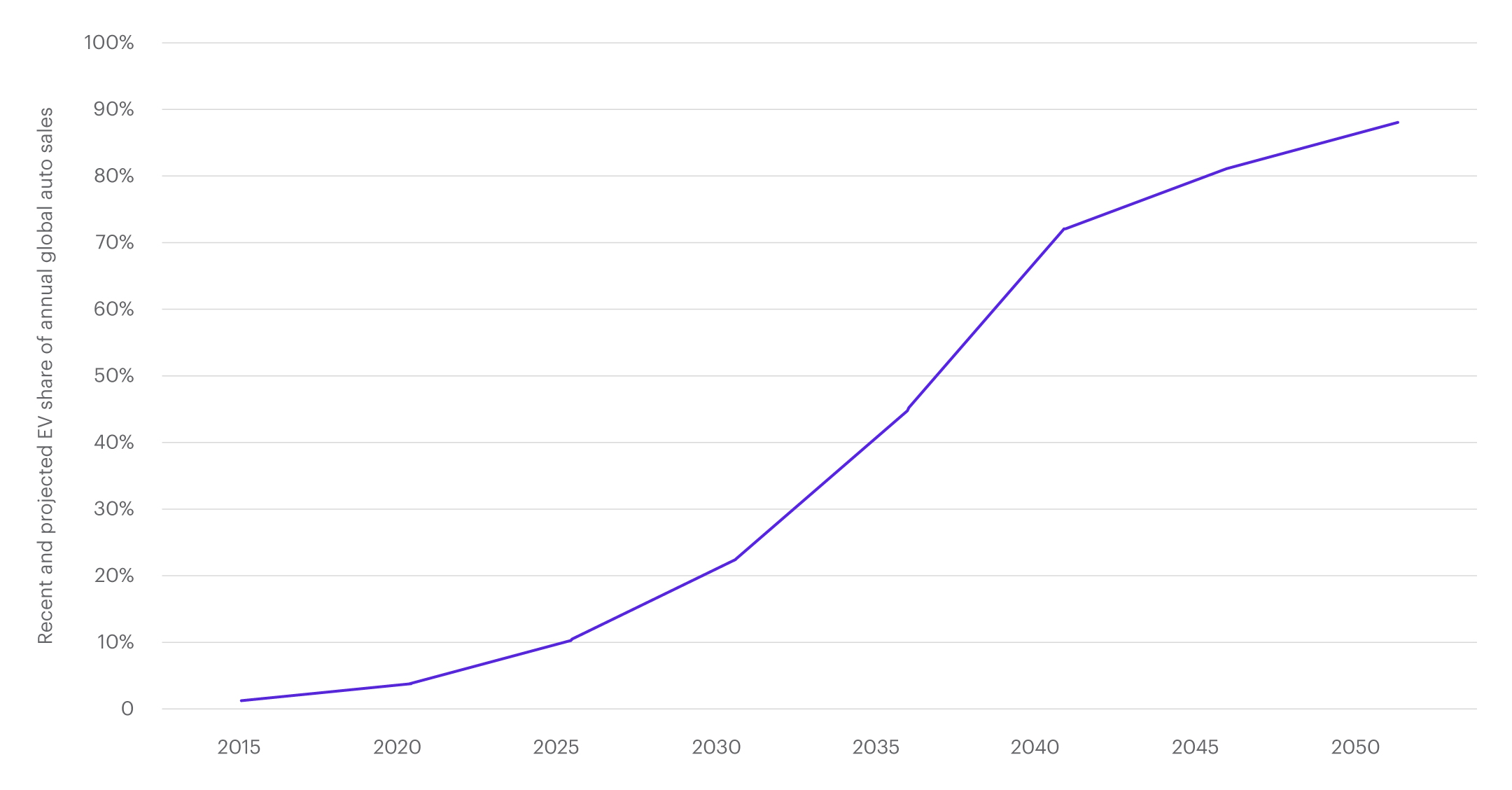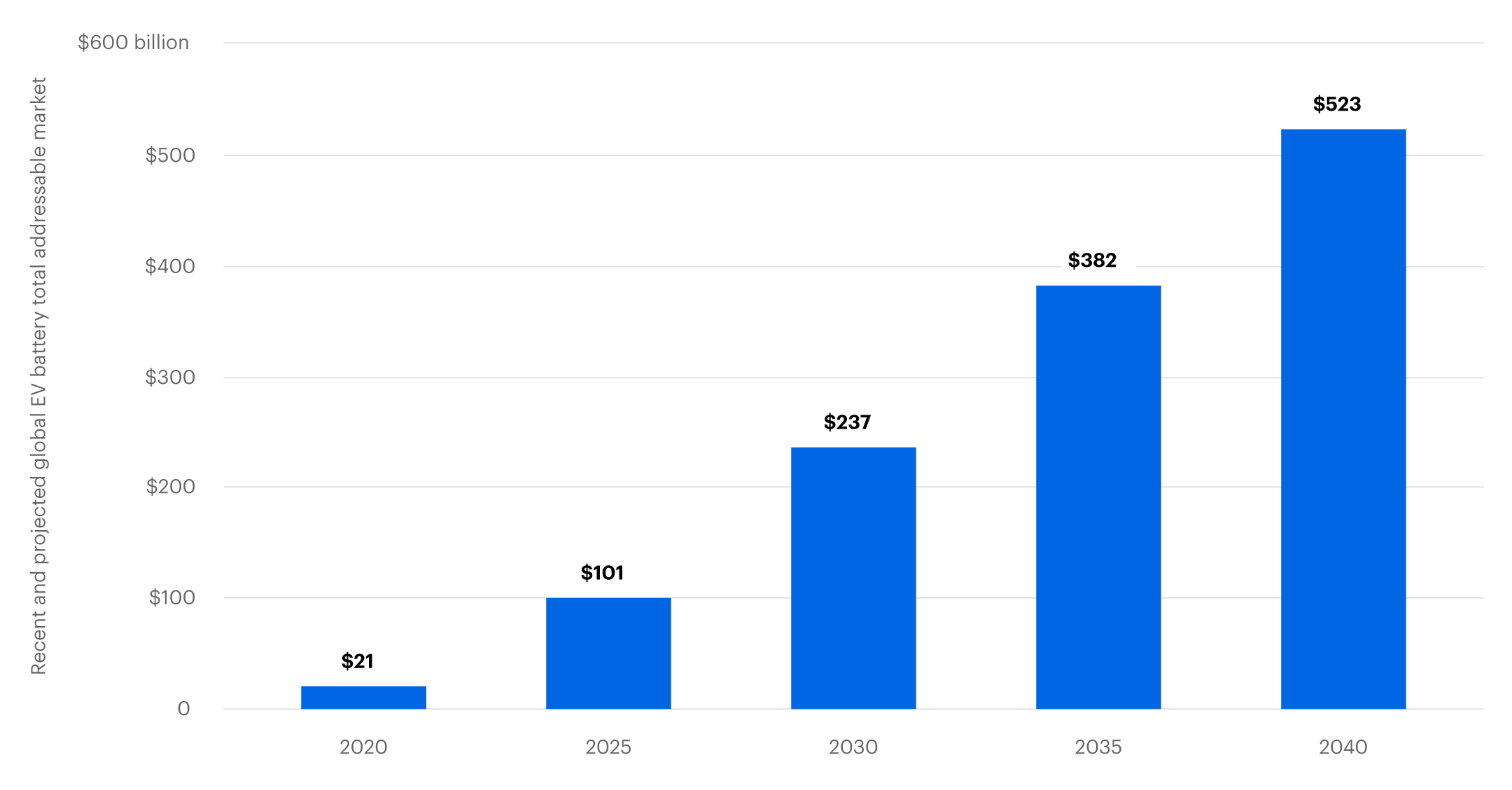Megatrends: Driving the adoption of electric vehicles
Morgan Stanley Wealth Management
12/21/22Summary: Investors can gear up for a long-term shift in automotive trends, as electric vehicles are expected to account for 90% of auto sales by 2050.

New and legacy auto makers are investing heavily in electrification. Consumer demand for electric vehicles (EVs) is high, and governments continue to incentivize both production and ownership. As a result, EVs’ share of global auto sales is likely to grow from about 7% today to nearly 90% by 2050, according to research from Morgan Stanley. But the widely anticipated transition to a global auto market dominated by EVs is likely still decades in the making, and there are potentially numerous opportunities for long-term investors along the way.
What factors could propel this technology megatrend? And how can long-term investors benefit from the industry’s growth?
What is driving EV market growth?
There are several factors driving the growth of EVs from both a supply and demand perspective.
- Automakers are committing more capital. By the end of the decade, total capital expenditures for the EV industry could reach $108 billion.
- Demand for EVs is strong. Although EV ownership is relatively low today, research from Morgan Stanley shows that 29% of consumers are interested in purchasing an EV, and another 24% are interested in purchasing a hybrid vehicle. Those percentages will likely grow as EVs become more affordable.
- EVs could reach price parity with gas-powered vehicles soon. At approximately $65,000,1 EVs are out of reach for many consumers today. However, continued performance improvements and reductions in the cost of batteries (which account for about 35% of an EV’s total cost), could lower the average EV price to $18,000 by 2025. That’s less than a comparable gas-powered vehicle.
- Public policy has decisively shifted toward favoring decarbonization. In the U.S., 24 states and the District of Columbia have put in place some form of clean vehicle policies, including increasingly stringent emissions standards, as well as rebates and other incentives for zero-emission vehicles and related infrastructure.2 Globally, today, over 85% of car sales are subject to fuel economy and tailpipe CO2 emission standards.3
The result could be a steadily growing market share for EVs. In the U.S. alone, EVs could become the predominant vehicle by 2045.
Electric vehicles could account for nearly 90% of the market by 2050

Source: MS & Co. Research, Morgan Stanley Wealth Management Global Investment Office as of June 4, 2020.
Potential roadblocks to EV mass adoption
As this still-nascent industry grows, however, there could be speedbumps in the near to medium term.
- Supply constraints: In the near term, a shortage of battery components, such as lithium, cobalt and graphite, could continue to delay production and keep EV costs elevated. Similarly, a COVID-era shortage of semiconductors has recently boosted EV costs, although there are signs that these supply issues are abating.
- Insufficient infrastructure: By 2025 there will be 7 million EVs on the road in the U.S., representing 3% of total vehicles—and about 5 million charging ports will be needed to support them, up from about 120,000 today, requiring significant investments.4 In addition, increased EV use would place greater strain on the electrical grid and could require utilities in the U.S. and Europe to invest hundreds of billions more in transmission and distribution.
The electric vehicle battery market could grow to $525 billion by 2040

Source: MS & Co Research, Morgan Stanley Wealth Management Global Investment Office as of Jan. 18, 2022.
How can you invest in the EV megatrend?
A three-tier framework can serve as a roadmap for how to invest in vehicle electrification over time.
- EV auto companies and battery manufacturers, the latter being one of the most vital suppliers to EV makers. As consumer adoption of EVs likely accelerates, these companies could be the most direct beneficiaries of increasing demand, with the battery market alone growing to nearly $525 billion by 2040, as shown in the chart above. Look for investment opportunities earlier in the industry’s growth, as production and demand ramp up.
- Key suppliers for EV and battery makers, including semiconductor manufacturers, chemical and material processors, and metals and mining companies. Investment opportunities in these companies are also likely to be most plentiful early in the industry’s growth, as demand for their products continues to increase. In some cases, these suppliers may be a more attractive opportunity than pure-play EV manufacturers, because they often have a more diversified customer base and derive revenue from multiple industries.
- Ancillary service providers, including software producers, power companies and tech firms targeting the auto industry to offer shared services. Given the relatively small market share of EVs today, investment opportunities related to such companies may seem minimal, but farther down the road, Morgan Stanley expects these industries to expand meaningfully, with automobile-related technology services growing to a potential market as large as $10 trillion.
Investors could also consider exchange-traded funds (ETFs) that offer broad exposure to stocks of companies involved in the industry.
As always, be sure that investments align with individual goals, timelines, and risk tolerance.
The source of this Morgan Stanley article, Megatrends: Driving the adoption of electric vehicles, was originally published on December 20, 2022.
- “Electrified Vehicle Sales Hit Record, According to Kelley Bluebook,” PR Newswire, Oct. 2022. Retrieved from: https://www.prnewswire.com/news-releases/electrified-vehicle-sales-hit-record-according-to-kelley-blue-book-301653678.html
- “State Climate Policy Maps,” c2es.org, Nov. 2022. https://www.c2es.org/content/state-climate-policy/#:~:text=At-a-glance,targets
- “Policies to promote electric vehicle deployment,” iea.org, April 2021. https://www.iea.org/reports/global-ev-outlook-2021/policies-to-promote-electric-vehicle-deployment
- “Expect more EV Charging Stations as States Tap into Federal Dollars,” pewtrusts.org, Oct. 2022. https://www.pewtrusts.org/en/research-and-analysis/blogs/stateline/2022/10/11/expect-more-ev-charging-stations-as-states-tap-into-federal-dollars#:~:text=Currently%2C%20there%20are%20nearly%2047%2C000,companies%20that%20make%20charging%20networks.
How can E*TRADE help?

Innovative vehicles
See how you can invest in the rapidly developing market around driverless vehicles and electric cars.

Morgan Stanley Financial Advisors
Eligible clients can work with a Morgan Stanley Financial Advisor to access timely investment ideas and insights from Morgan Stanley’s team of leading analysts, economists, and strategists.